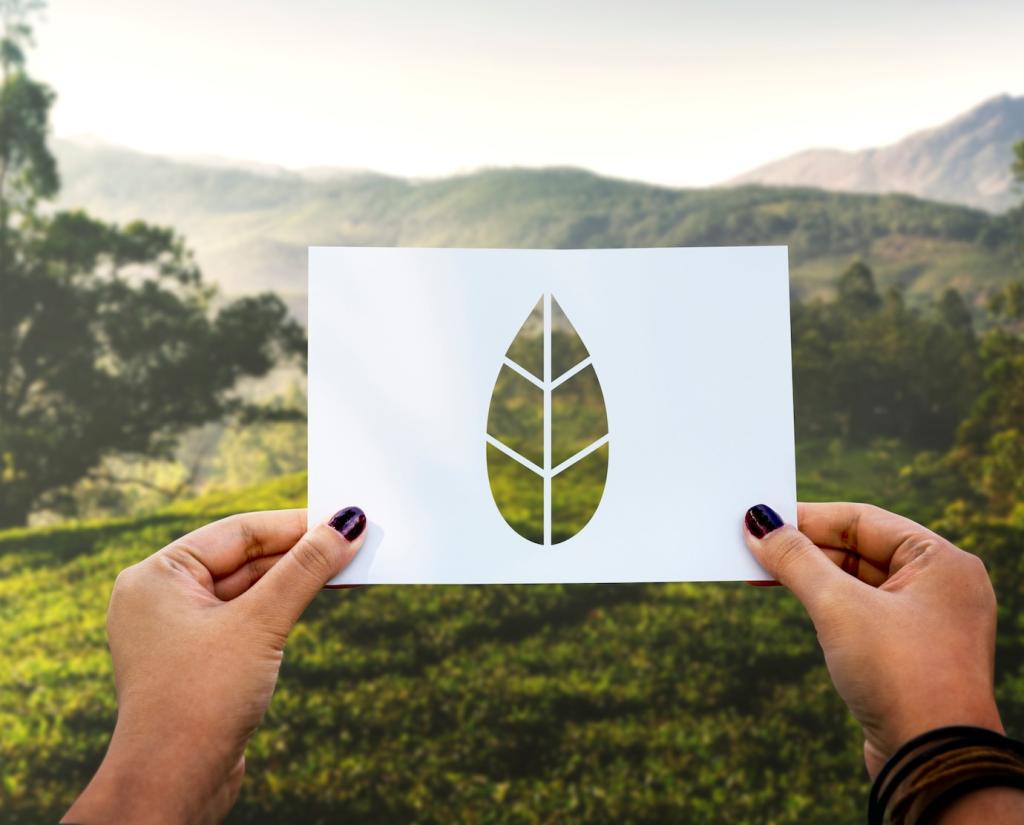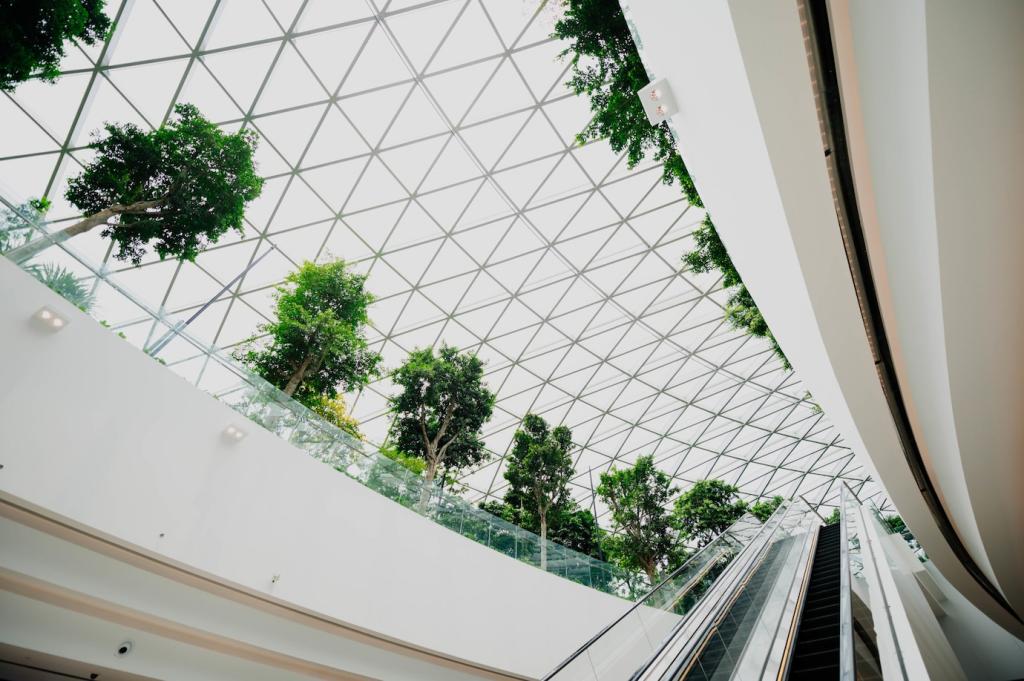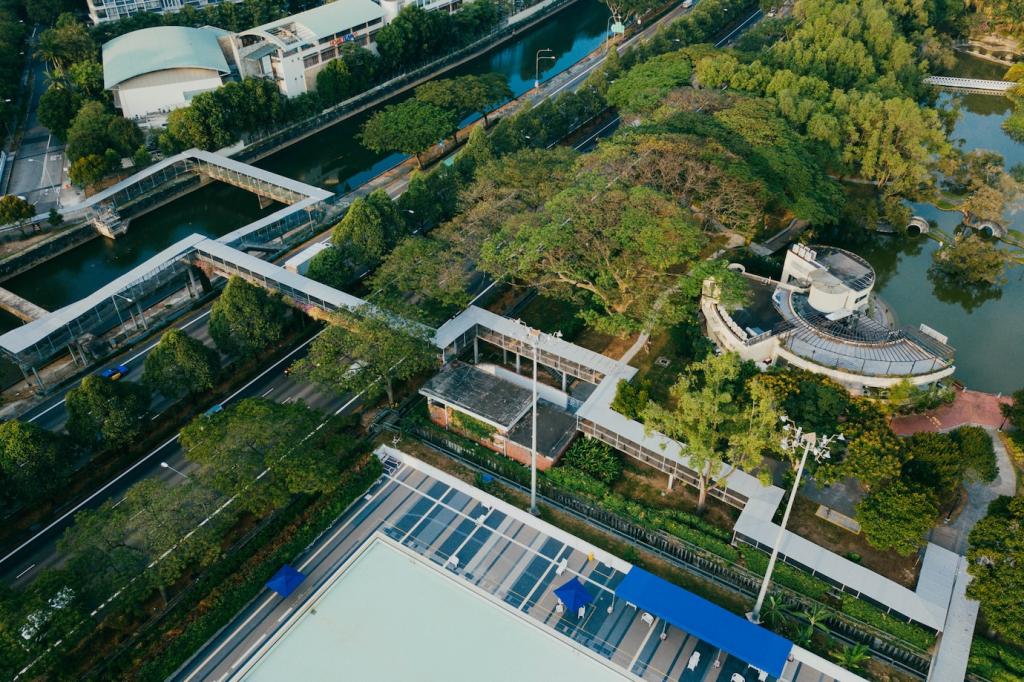Water conservation is a fundamental aspect of creating and maintaining eco-friendly homes. With growing concerns about water scarcity and environmental sustainability, adopting efficient water-saving practices has become essential for homeowners committed to reducing their ecological footprint. This page explores various water conservation techniques that can make a significant difference in eco-homes, helping to preserve natural resources while ensuring a comfortable and healthy living environment.
Smart Fixtures and Appliances
Integrating water-efficient fixtures and appliances is a cornerstone of indoor water conservation. Low-flow toilets, aerated faucets, and Energy Star-rated dishwashers and washing machines significantly reduce water consumption without compromising performance. These advanced devices leverage improved engineering to maximize output from every drop. Homeowners can replace outdated units with models designed to use the least amount of water necessary for optimal functioning. In the long run, this shift not only conserves water but also results in measurable cost savings on utility bills, further incentivizing the adoption of eco-friendly solutions.
Prompt Leak Detection and Repair
Even small leaks in plumbing systems can lead to considerable water loss over time. Implementing regular inspections and utilizing smart water monitors helps identify leaks early, minimizing waste and preventing potential damage to the home. Early detection is crucial, as hidden leaks behind walls or beneath floors often go unnoticed and can cumulatively waste hundreds of gallons of water each month. Fast action to repair leaks not only preserves water but also protects the structural integrity of the property, sustaining both the environment and the value of the home.
Outdoor Water Management
Drought-Resistant Landscaping
Landscaping choices have a profound effect on outdoor water consumption. By selecting native and drought-resistant plants that thrive naturally in the local climate, eco-homeowners drastically minimize the need for irrigation. These hardy species require little supplemental water and often support local wildlife by providing food and shelter. Xeriscaping, or designing landscapes to reduce or eliminate the need for watering, creates attractive and sustainable outdoor spaces without sacrificing visual appeal or environmental responsibility.
Efficient Irrigation Systems
Advanced irrigation technologies such as drip irrigation and weather-based controllers allow for precise watering schedules tailored to the needs of individual plants. These systems deliver water directly to the root zones, greatly reducing evaporation and runoff. Smart controllers adjust watering times in response to rainfall and soil moisture levels, ensuring that gardens and lawns only receive exactly what they need. By optimizing irrigation, homeowners can maintain vibrant landscapes while saving significant amounts of water and reducing the frequency of costly landscape maintenance.
Mulching and Soil Improvement
Applying mulch and investing in healthy soil are two powerful strategies in outdoor water conservation. Mulch creates a protective barrier on the soil surface, minimizing evaporation, suppressing weeds, and regulating temperature fluctuations. Incorporating organic matter like compost into the soil enhances its moisture retention capacity and encourages deep root growth, allowing plants to access water stored deeper underground. Together, these practices ensure that outdoor vegetation thrives with minimal additional watering, promoting resilience and sustainability in the home landscape.

Roof Collection Systems
Rainwater harvesting begins with the installation of roof collection systems that direct rainfall from gutters into storage tanks or barrels. These systems are designed for minimal maintenance and high efficiency, making them suitable for various roof types and climates. By intercepting rainwater before it runs off into storm drains, homeowners gain a free, renewable resource that can be used throughout the year. Well-designed systems feature filtration to ensure stored water remains clean, turning each rainfall event into an opportunity for savings and sustainability.

Storage Tanks and Filtration
Storing harvested rainwater requires durable tanks positioned conveniently and safely around the property. Tanks can be above or below ground, depending on space and aesthetic preferences. Effective filtration systems remove debris and contaminants, allowing homeowners to safely use collected water for gardens, lawn care, and even, with proper treatment, for indoor use such as toilet flushing or laundry. The combination of robust storage and thorough filtration transforms rainwater into a reliable alternative supply, reducing dependency on treated municipal water and providing resilience during droughts or restrictions.

Gravity-Fed and Pump-Assisted Distribution
Delivering stored rainwater where it’s needed involves both gravity-fed and pump-assisted solutions. Gravity-fed systems offer simplicity and low energy demands, working well for elevated tanks and landscaping applications. For supplying water to indoor fixtures or delivering higher pressures, pump-assisted systems ensure reliable flow and broader coverage. Both solutions can be seamlessly integrated into existing plumbing, making it practical for homeowners to put every drop of harvested rainwater to good use, maximizing the benefits of their investment in sustainable water management.
